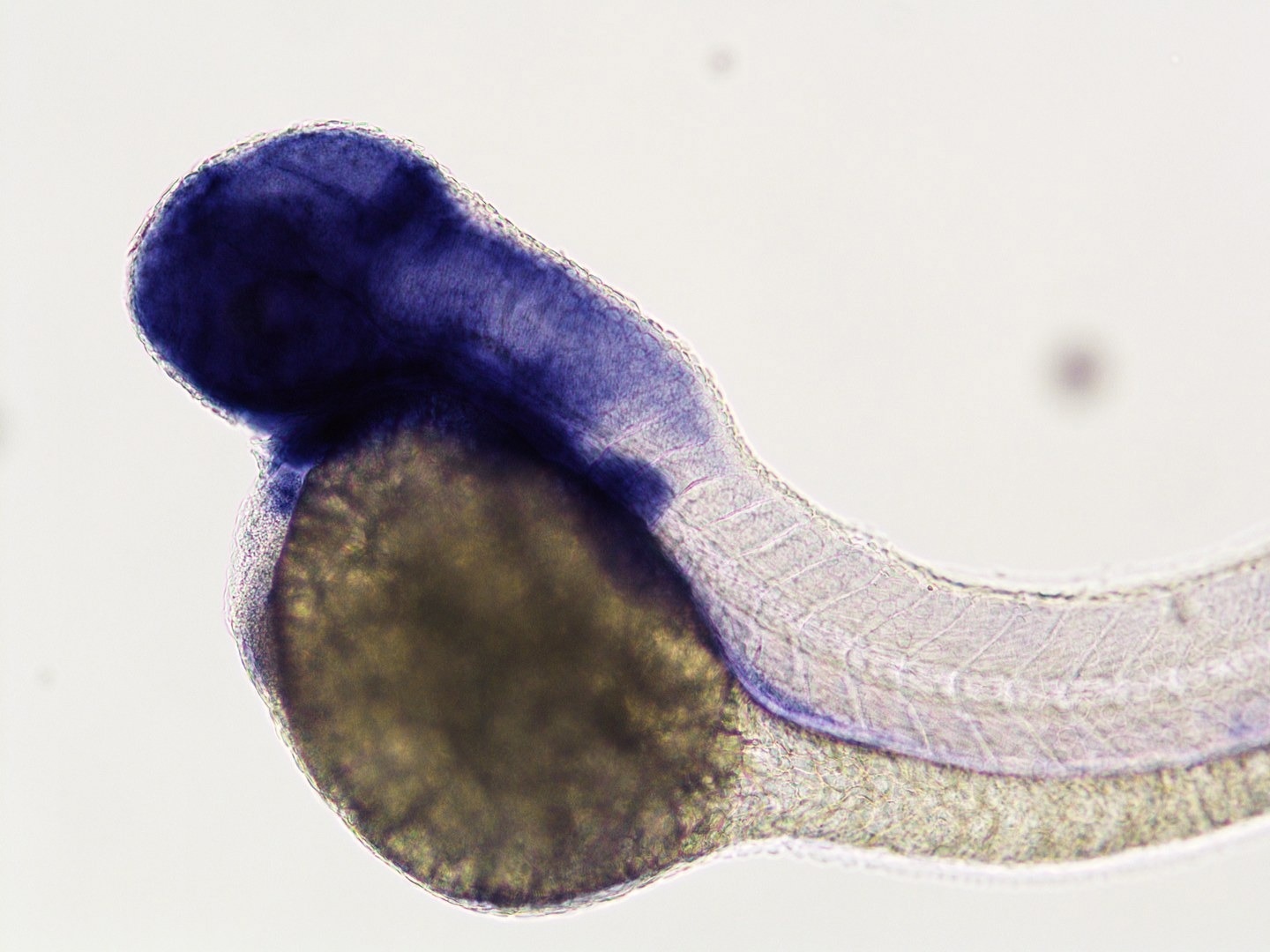An international study led by the medical school at the University of Bonn has discovered a gene that is crucial to the growth of the human embryo. Abnormalities of different organ systems may occur if it is changed.
 Zebra fish - The zebrafish also has a SHROOM4 gene. The blue staining reveals that it is formed mainly in the head and brain, the heart, the gastrointestinal tract, and the fins. Image Credit: Dr Kolvenbach & Dr Dworschak / University of Bonn
Zebra fish - The zebrafish also has a SHROOM4 gene. The blue staining reveals that it is formed mainly in the head and brain, the heart, the gastrointestinal tract, and the fins. Image Credit: Dr Kolvenbach & Dr Dworschak / University of Bonn
The gene first appeared very early in evolution. For instance, it also exists and serves a similar purpose in zebrafish. The Journal of Medical Genetics has now published the results.
Studying two people with congenital malformations allowed the researchers to identify the gene.
It was a man and his niece. Both had malformed kidneys, urinary tract, and esophagus, and the man also had a malformed right arm and heart.”
Dr Gabriel Dworschak, Department of Neuropediatric, University Hospital Bonn
Research on rare genetic diseases is performed at the Institutes of Anatomy and Human Genetics by a doctor from the University Children’s Hospital in Bonn. A gene called SHROOM4 was modified in individuals affected compared to healthy individuals when the team examined the genetic makeup of the family members.
It was already known that SHROOM4 was important for brain function from another context. Intellectual disability, epileptic seizures, and abnormal behavior can all be brought on by mutations.
“Our findings indicated though, that it may play a broader role in embryonic organ development,” Dr Dworschak stated.
The Bonn team looked for other cases where abnormalities in the SHROOM4 gene had been discovered internationally, and they were successful.
Together with our cooperation partners, this led us to four more affected individuals from three families. All of them had the SHROOM4 gene altered, but not always in the same way.”
Dr Heiko Reutter, Professor, Department of Pediatrics and Adolescent Medicine, Friedrich-Alexander University of Erlangen-Nürnberg
Zebrafish also needs SHROOM4
This did not, however, definitively establish that the malformations were caused by SHROOM4 variants. The zebrafish, however, is an animal that possesses a gene that is extremely similar. It is used as a model organism in many genetic studies today, and not just because it is simple to maintain and reproduce quickly according to species.
Its larvae have almost transparent skin. Due to this, it is simple to see how the animals’ embryos develop under a light microscope.
Here at the University Hospital, we have the advantage that the research group led by Prof. Dr. Benjamin Odermatt from the Institute of Neuroanatomy works a lot with zebrafish. This expertise came in handy in our study.”
Dr Caroline Kolvenbach, Institute of Anatomy, Medical Faculty, University of Bonn
The SHROOM4 gene was almost entirely inactivated by the researchers in the larvae. Whereupon, the animals exhibited malformations resembling those in the patients. However, when intact human genetic material was injected into larvae that had SHROOM4 switched off, the larvae almost developed normally.
Dr Dworschak stated, “This shows first that they absolutely need a functional SHROOM4 for healthy development; and second, that the human gene can still take over the function of the fish gene.”
The research team is now interested in learning how the gene affects embryonic development.
“We assume that it is needed for very basic processes in the cell. It is hard to explain otherwise why changes in the same gene cause such a variety of symptoms,” further added Dr Dworschak.
Small piece in the mosaic of an extremely complex picture
It is still unclear exactly how a fertilized ovum transforms into a mouse, dog, or human. This is so because an ovum can develop into any type of tissue in an organism, including bone, skin, muscle, and even the brain.
Given that its daughter cells share its genetic makeup, they ought to be able to function in a similar manner. However, at a very early stage, specific programs in their cells are activated that irrevocably determine their course of development.
To the very last detail, this process must be coordinated. Only then can it be guaranteed that the eyes will develop in the proper location on the face, while other cells nearby will differentiate into the cartilage for the nose. The conductor holding the baton is surprisingly absent. It is infinitely more difficult than if a Lego spaceship were simply building itself.
Dr Dworschak concluded, “Our study is a small piece of the mosaic to this picture, which is still largely incomplete.”
Source:
Journal reference:
Kolvenbach, C. M., et al. (2022). X-linked variations in SHROOM4 are implicated in congenital anomalies of the urinary tract and the anorectal, cardiovascular and central nervous systems. Journal of Medical Genetics. doi.org/10.1136/jmg-2022-108738